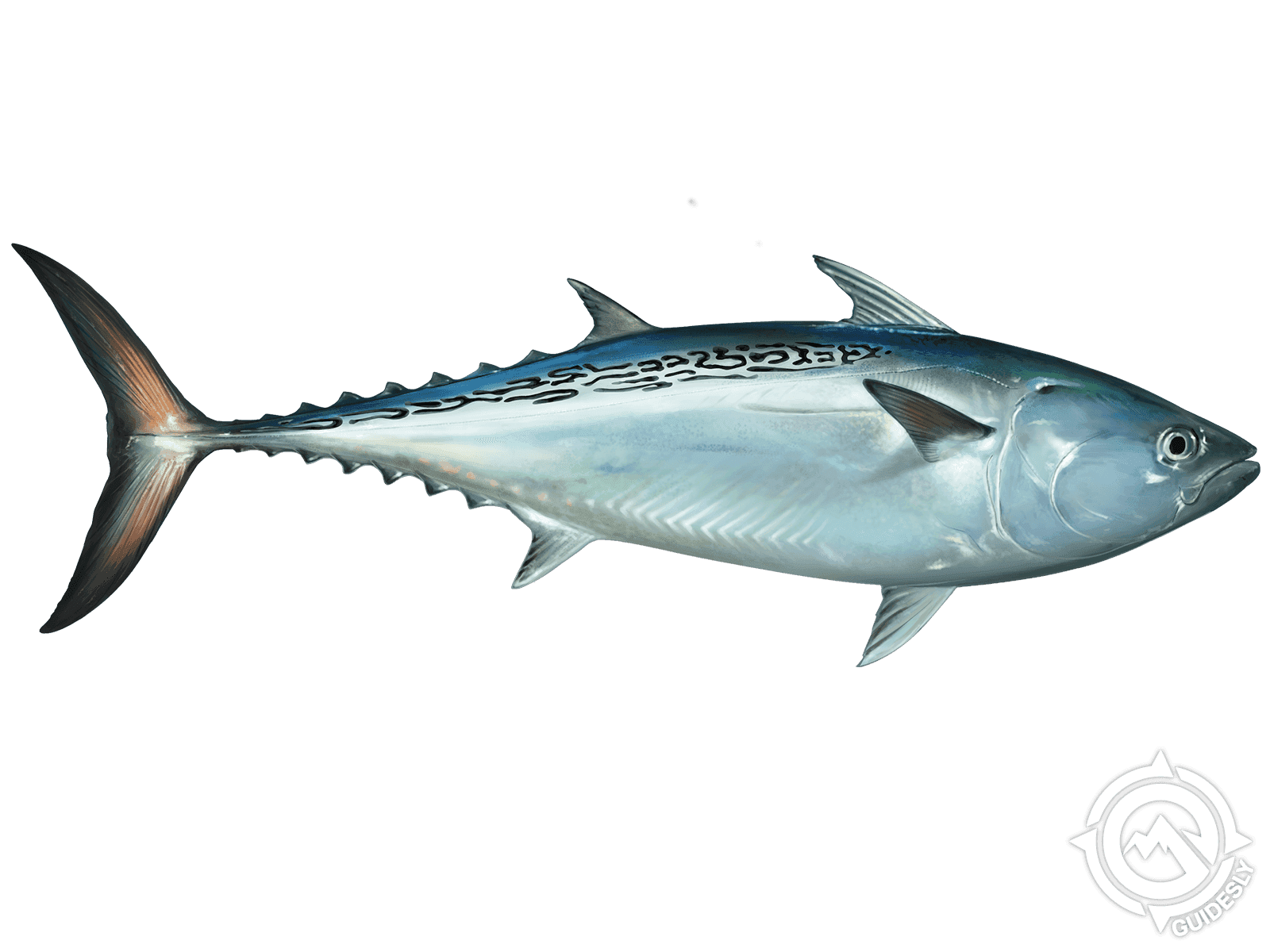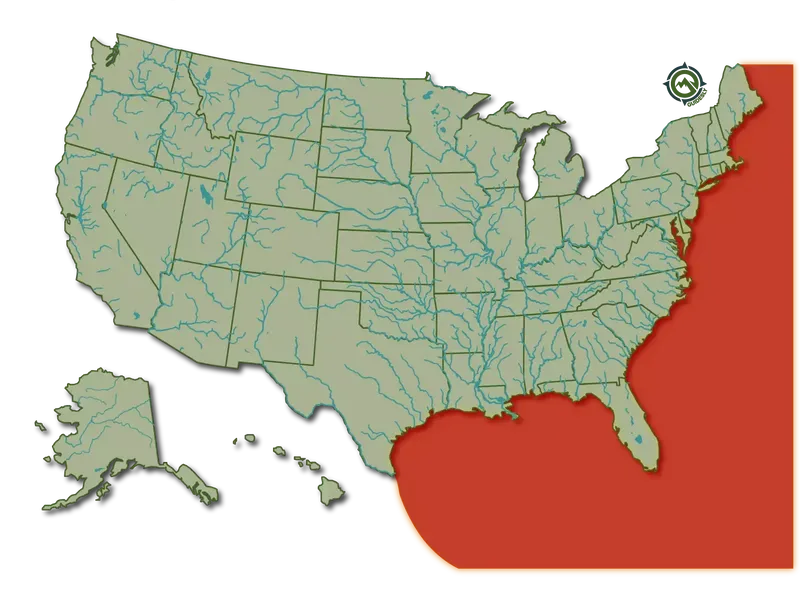Little Tunny

Species Details
Euthynnus Alletteratus
Scombridae
Perciformes
Onshore, Nearshore, Offshore
5 - 15 lbs.
24" - 48"
Little Tunny (Euthynnus alletteratus) Description
The Little Tunny is a variant of tuna, known also as a Bonita, False Albacore, or Little Tuna (hence the nickname). Little Tunnies is also considered one of the smaller variants of tuna. Because of their size, one of the Little Tunny’s defense mechanisms includes going in schools and being migratory. As migratory fish, they usually head south during Winter or Fall.
The Little Tunny resembles a hybrid between a Skipjack Tuna, different species of mackerel, and an Atlantic Bonito. It appears quite small and has a fusiform body, looking more torpedo-shaped. This allows them less friction in water and makes them less tired as they migrate. It has a slight underbite with cone-shaped teeth lining with a small bone sticking out from the roof of the mouth. If you open its mouth, you’ll also notice that the Little Tunny’s tongue has two vertical lines for ridges.
Aesthetically, the Little Tunny has a rounded snout to lessen the water resistance. To prevent themselves from being picked off, their scales and skin are a dark metallic blue with dark blue-green stripes from the midpoint of their dorsal fin to their tail. They also have little, black fingerprint-looking spots on its body which distinguishes them from other fish such as the Atlantic Bonito.
Diet
The Little Tunny is carnivorous. They usually feast on small fish and small invertebrates which are clumped up together in groups. Another reason why Little Tunny travels in schools: because their preys are in schools, they usually swim around them in a school to gather them up. However, Little Tunnies are also okay in eating some cephalopods (i.e., squid) and crustaceans.
Little Tunny Size
The Little Tunny is usually measured by weight. Their average weight is around 10-12 lbs. Sometimes, they can even hit 20 lbs. The highest ever recorded was around 36 lbs.
Interesting Facts about the Little Tunny
- A Little Tunny only has a short lifespan of about 5 years.
- When tracking a Little Tunny, listen for sounds. Little Tunnies are quite noisy when they eat.
- Because its flesh is red, the Little Tunny isn’t always eaten.
- Most would confuse it for having red tide when in reality, its meat is very similar to that of a Yellowfin Tuna.
- Most people prefer white meat fish. However, when finding a Little Tunny, the redder the meat, the fresher it is.
- Little Tunny has stronger tasting meat over the usual tuna.
- Little Tunnies are strong swimmers. Be warned; they definitely can give you a good fight.
- Clean your Little Tunny well before eating! Especially in the stomach! Little Tunnies are known for housing many different kinds of parasites.
Little Tunny – Fishing Techniques: How to Fish for a Little Tunny
The Little Tunny is known for its hard, fighting spirit, making it a prized game fish. Asides from that, Little Tunnies are often fished out by anglers who are shooting for bigger prizes such as sharks and marlins.
The most common technique anglers use in fishing out a Little Tunny is via trolling. Since the Little Tunny travel in schools, anglers usually set up multiple fishing lines to catch them. They add ballyhoos and mullets while decorating it with some brightly colored feathers to attract them. However, Little Tunny won’t shy away from live bait. Some live baits they would prefer would be Bluefish or Pinfish.
Another recommended technique is Flyfishing. Using a lightweight bait, cast the line in the water. But don’t yank it! When flyfishing, you’re supposed to let the fish do the work for you. Any tugging and resistance might cause your line to snap.

Little Tunny Habitat and Distribution
Little Tunny are pelagic fish and prefer warm to temperate waters. They like staying in nearshore waters, preferring to be near the surface. They sometimes loiter around in points, inlets, jetties, and sandbars. They sometimes swarm underneath the jetty especially if there’s a school of their prey swimming nearby.







